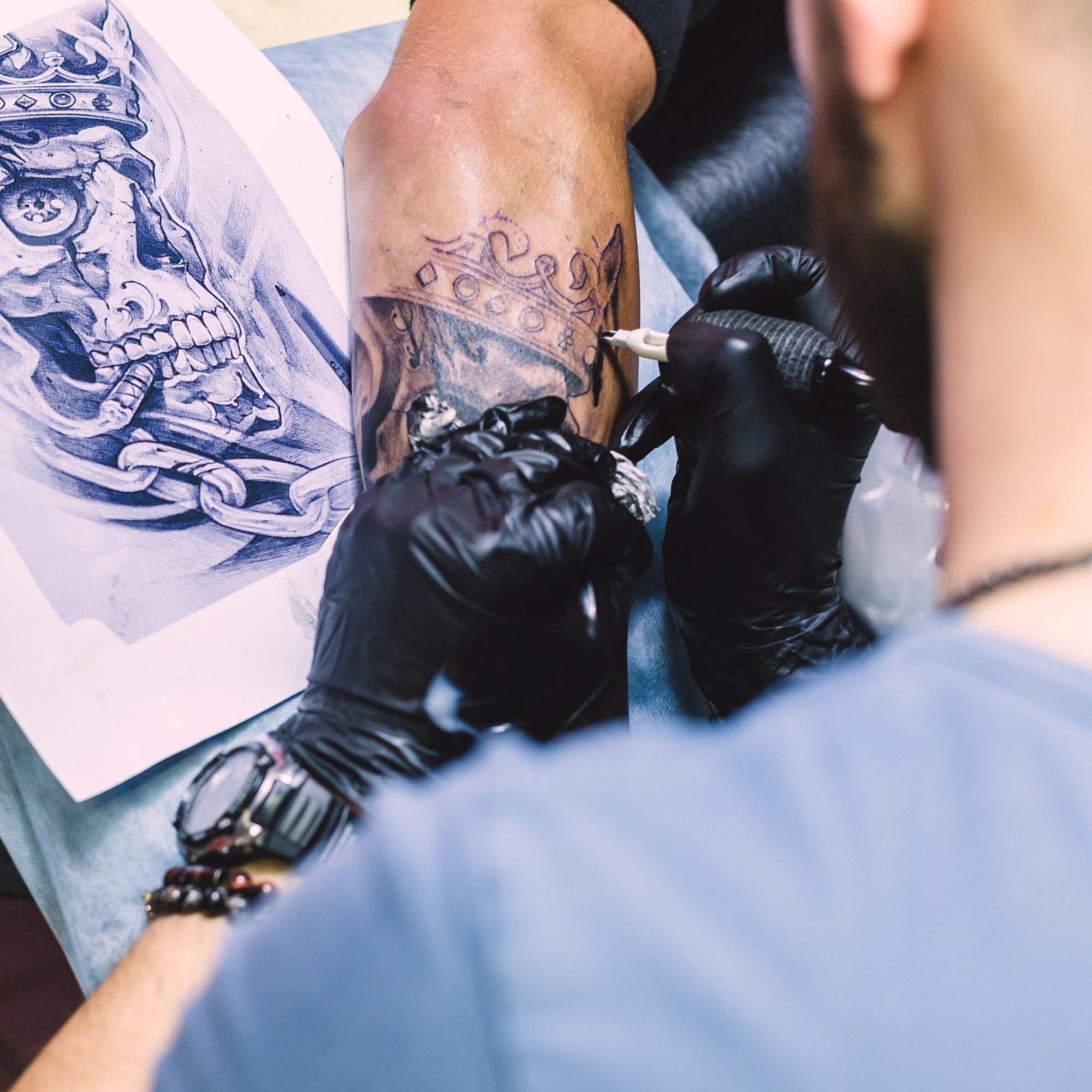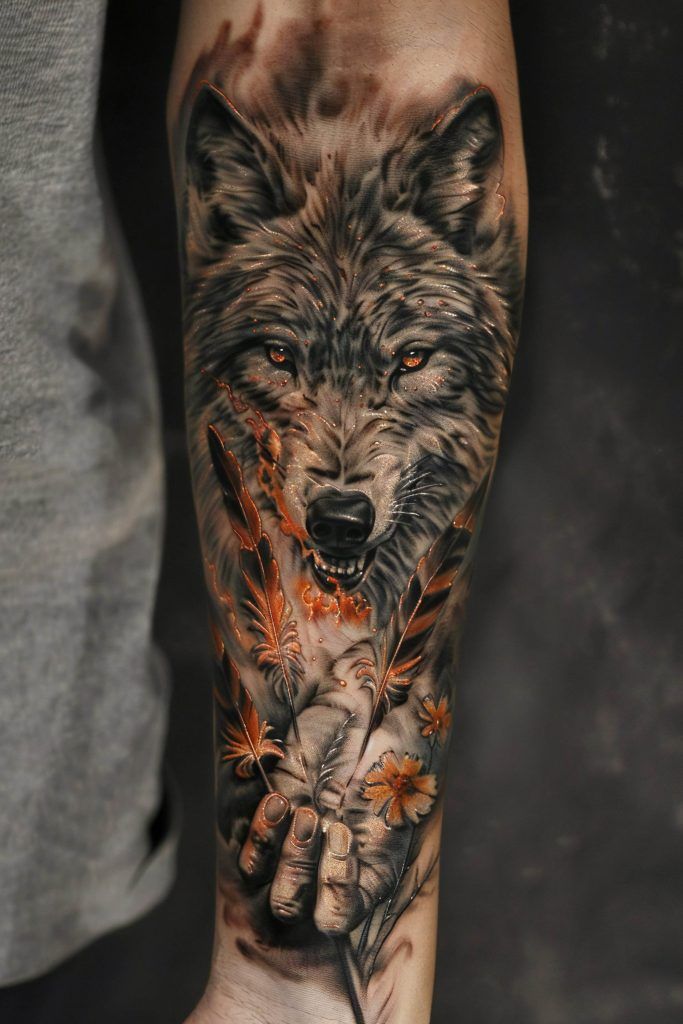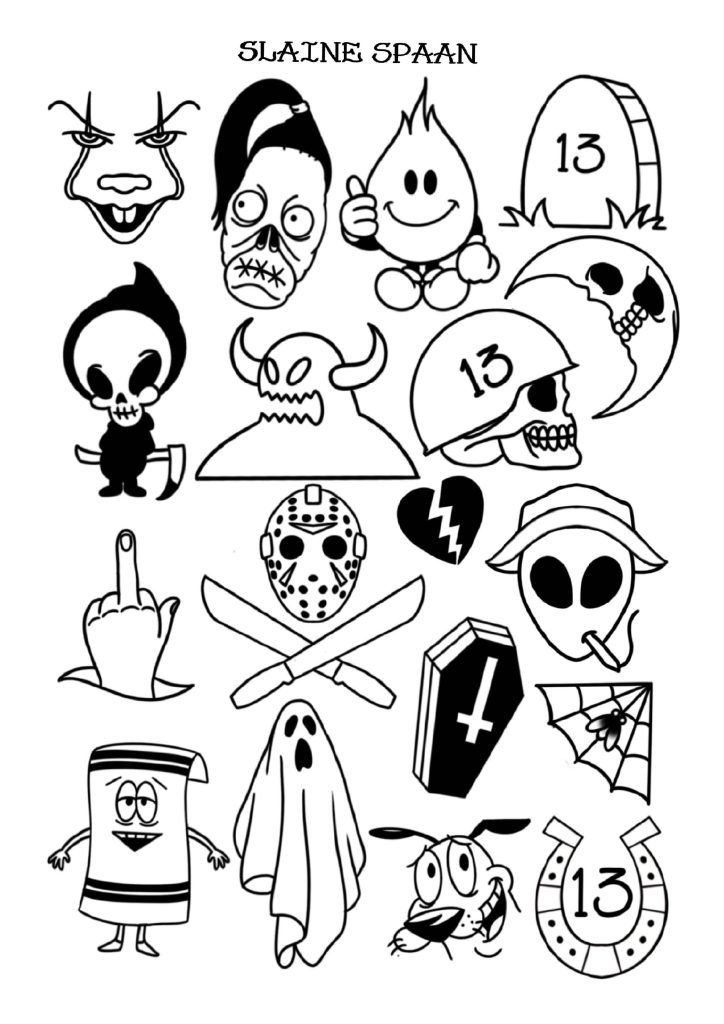Tattoos have long served as a means of personal expression, identity, and storytelling. Among the myriad themes available, folklore-inspired horror tattoos stand out as a captivating genre, intertwining myth and artistry. These designs pull from the rich tapestry of human culture, drawing on ancient tales of monsters and legends that have haunted our imaginations for centuries. This article delves into the allure of folklore-inspired horror tattoos, examining iconic creatures, cultural perspectives, and the artistic techniques that breathe life into these haunting narratives.
The Allure of Folklore
Folklore is more than just a collection of stories; it represents the collective wisdom, fears, and dreams of a culture. Passed down through generations, these tales often serve moral or cautionary purposes, warning listeners of the consequences of certain actions or the unpredictability of life. The monsters and myths embedded in folklore carry significant weight, acting as symbols of deeper truths.
Emotional Resonance
Folklore-inspired tattoos resonate on an emotional level, connecting the wearer to their roots and the universal themes found in these tales. Whether it’s the seductive danger of a vampire or the tragic lament of a banshee, these tattoos embody stories that evoke a range of emotions—from fear to nostalgia.
Cultural Significance
Many cultures have rich traditions filled with mythical creatures, often reflecting societal values and fears. By choosing a folklore-inspired horror tattoo, individuals can connect with their heritage, celebrating their culture while simultaneously embracing the darker, more mysterious aspects of human existence.

Iconic Creatures in Horror Tattoos
Folklore is teeming with monsters that have inspired countless horror tattoos. Here, we explore some of the most iconic creatures and the stories behind them.

The Vampire
Vampires have fascinated humanity for centuries, representing the duality of desire and danger. Originating in various cultures, from Eastern European legends to modern portrayals in literature and film, vampires symbolize immortality and the struggle against mortality.
Design Elements
Vampire tattoos often feature striking imagery, such as fangs, blood, and alluring figures. The designs can vary from gothic aesthetics to more contemporary interpretations, allowing for personal expression through color, style, and symbolism.
Themes and Symbolism
The vampire embodies the eternal conflict between life and death, attraction and repulsion. Many wear these tattoos as a nod to the seductive nature of danger, reflecting personal struggles or a fascination with the darker aspects of human nature.
The Werewolf
The werewolf is a powerful symbol of the struggle between civilization and primal instincts. Rooted in various cultures, this creature represents the transformation of man into beast, often as a result of a curse or deep-seated emotional turmoil.

Design Elements
Werewolf tattoos frequently depict the transformation process—capturing the moment of change between human and wolf. This can be illustrated through half-human, half-wolf figures or scenes of wild, untamed nature, emphasizing the raw power of the beast.
Themes and Symbolism
Werewolf tattoos often symbolize inner conflict and the battle against one’s darker impulses. For many, these designs reflect personal struggles with identity and societal expectations, making them a powerful choice for self-expression.
The Banshee
In Celtic mythology, the banshee is known as a wailing spirit that foretells death. Often depicted as a woman, her mournful cry is a chilling reminder of mortality and the transient nature of life.
Design Elements
Banshee tattoos can incorporate ethereal imagery, such as flowing hair, ghostly figures, and elements of nature like moonlight or fog. These designs often evoke a sense of melancholy, beauty, and haunting grace.
Themes and Symbolism
The banshee symbolizes the inevitability of death and the emotional weight of loss. Individuals may choose this tattoo to honor a loved one, express their own experiences with grief, or confront the darker aspects of existence.
Cultural Perspectives on Horror
Global Mythologies
Each culture has its own unique interpretations of horror, reflected in the folklore and myths that have evolved over time. From the ancient Greeks to Indigenous peoples around the world, these stories provide a rich source of inspiration for tattoo art.
Japanese Yōkai
In Japanese folklore, yōkai are supernatural creatures that can be benevolent or malevolent. These beings range from mischievous spirits to vengeful apparitions, each carrying its own story and symbolism.
- Design Inspiration: Yōkai tattoos often feature intricate details and vivid colors, showcasing the unique aesthetic of Japanese art. Common themes include transformation, the fluidity of form, and the interplay between the human and the supernatural.
Slavic Domovoi
In Slavic tradition, the domovoi is a household spirit that protects the home and its inhabitants. Though generally benevolent, it can become vengeful if disrespected.
- Design Inspiration: Tattoos of domovoi can incorporate elements of domestic life, such as hearths or household items, often presented in a whimsical or playful manner. This can represent a connection to home and family, along with a reminder of respect for one’s surroundings.
African Anansi
Anansi, the trickster spider from West African folklore, embodies wit, wisdom, and creativity. This character often appears in stories that impart moral lessons.
- Design Inspiration: Anansi tattoos can feature intricate spider motifs, often interwoven with symbols of knowledge and storytelling. These designs emphasize cleverness, adaptability, and the importance of narrative.
The Artistic Expression
Styles and Techniques
The world of tattoo art is diverse, with various styles enhancing the storytelling aspect of folklore-inspired horror tattoos.
Traditional and Neo-Traditional
Traditional tattoos are characterized by bold lines and vibrant colors, often evoking a nostalgic feel. neo-traditional tattoos build on this foundation, incorporating more detailed shading and a wider color palette.
Illustrative and Realistic
Illustrative tattoos mimic the style of drawings or paintings, offering a more artistic interpretation of folklore. Realistic tattoos strive for lifelike depictions, making the mythical creatures appear as if they could step off the skin.
Symbolism and Meaning
Every element in a tattoo can carry specific meaning. Colors, placement, and accompanying imagery can enhance the narrative.
- Color: Darker shades like black, red, and deep blue may evoke feelings of fear or mystery, while brighter colors can emphasize beauty or allure.
- Placement: The location of a tattoo can also convey significance. For instance, a piece on the forearm may signify a desire to showcase one’s connection to folklore, while a design on the back might represent a deeper, more personal journey.
- Accompanying Imagery: Incorporating elements like flowers, animals, or symbols can add layers of meaning. For example, a werewolf tattoo adorned with roses might suggest beauty intertwined with danger.

The Process of Getting a Folklore-Inspired Horror Tattoo
Research and Inspiration
Before committing to a design, it’s essential to research the folklore that resonates with you. Understanding the stories behind the creatures will enrich your connection to the tattoo and help guide your artist in creating a piece that truly reflects your vision.
Choosing the Right Artist
Finding an artist who specializes in the style you desire is crucial. Look for portfolios that showcase their ability to capture the essence of folklore and horror. Communication with the artist is key—discuss your ideas, inspirations, and the stories you want to tell through your tattoo.
The Tattoo Experience
The tattooing process can be both exciting and daunting. Be prepared for the sensation of the needle and embrace the experience as part of your journey. This moment is not just about ink on skin; it’s about embodying a story, a myth, or a personal struggle.
Aftercare
Caring for your new tattoo is vital for its longevity. Follow the aftercare instructions provided by your artist to ensure that your design heals beautifully. This step is essential in preserving the colors and details that bring your folklore-inspired horror tattoo to life.
The Personal Connection
Storytelling Through Ink
For many, folklore-inspired horror tattoos are deeply personal. Each design can serve as a reminder of the struggles faced, the stories cherished, or the cultural heritage embraced. Wearing these tattoos transforms them into living narratives, allowing individuals to carry their stories with them wherever they go.
Community and Connection
Tattoo culture fosters a sense of community among enthusiasts. Sharing stories about the inspiration behind a tattoo can create connections with others who resonate with similar themes. Whether in conventions, online forums, or social media, the exchange of ideas and experiences strengthens bonds among tattoo lovers.
Conclusion
Folklore-inspired horror tattoos offer a captivating exploration of monsters, myths, and legends, bridging the gap between ancient narratives and contemporary artistry. Each tattoo serves as a testament to the enduring power of storytelling, allowing individuals to express their connections to culture, emotion, and personal identity.
Whether you are drawn to the seduction of vampires, the primal nature of werewolves, or the haunting lament of banshees, these designs resonate deeply, inviting the wearer to embrace their own stories. As you consider your next tattoo, remember the rich history and cultural significance behind these motifs. Your skin can become a canvas of myth and legend, celebrating the timeless tales that continue to inspire us all.
